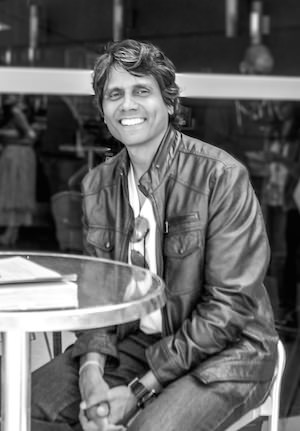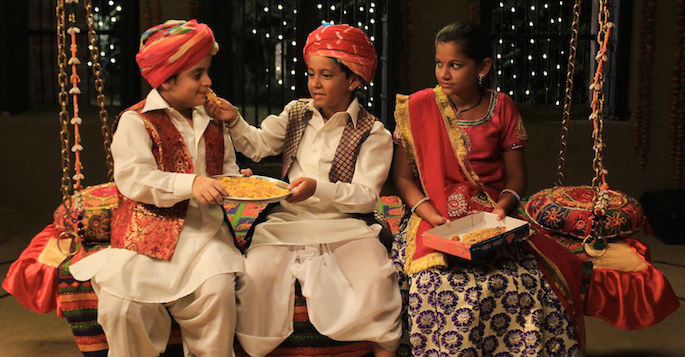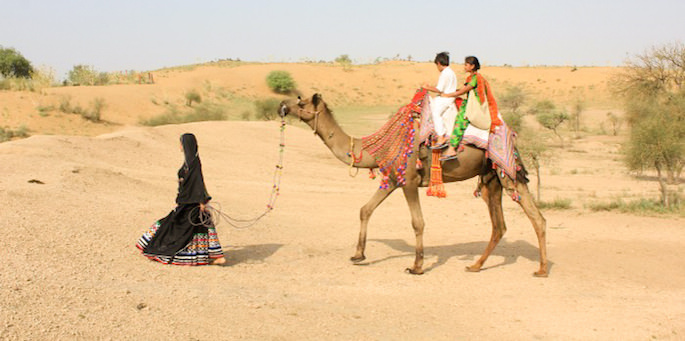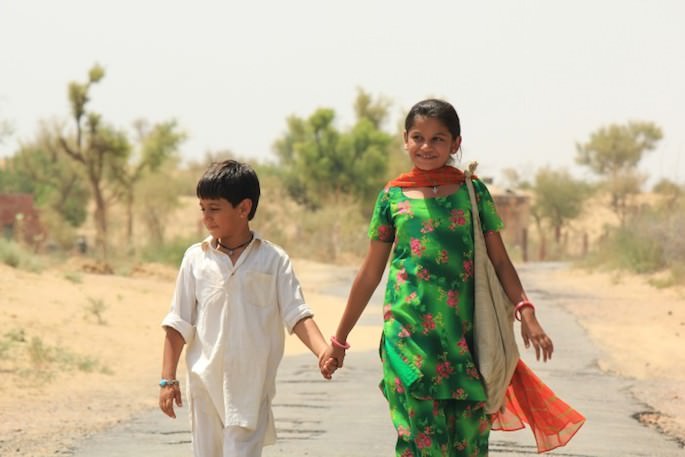
Back in 1998, a slender, young, U.S. returned engineer shot to fame – as writer, director, producer and star of his debut feature film, ‘Hyderabad Blues’.
Breaking the mould of Bombay’s ‘big-budget and mega-stars’ cinema, his humble film ran for over 6 months in theaters and garnered much critical acclaim. Seventeen years, a dozen feature films and several national and international awards later, Nagesh Kukunoor is now bringing his latest feature ‘Dhanak’ (Rainbow) to film festivals around the world.
We were fortunate to sit down and chat with Nagesh on a beautiful Saturday morning in Los Angeles, a day before his film screened at the Indian Film Festival, LA (IFFLA). Here are some excerpts.
The internet says that Dhanak is inspired by an Iranian film. Is that true?
No! Where did you read that?! (Wikipedia) You know, the internet scares me. One of the first things that I read about Dhanak was that it is a Marathi film. I can barely get by speaking my own mother tongue (Telugu)…how could I dare to make it in Marathi? But thank you, I am going to get on top of that.

So glad we cleared that out. Can you talk a little bit about the story and its inspiration?
The story was first suggested to me by a friend (Yusuf), for an ad. The idea was that a blind boy and his sister live in a small village in Rajasthan and she dreams of getting her brother’s eyesight back, so she keeps writing to this movie star. This was for a FedEx ad! But it never went anywhere. About a year later, I saw this lovely image of a brother and sister holding hands, walking across the desert. That’s when I called up Yusuf and told him I want to make this film. That’s about as far back as it goes…not to Iran (laughs).
It is one of the most joyous scripts I’ve written. Extremely organic and I just had great fun writing it.
“The desert plays a very active role in the script. It’s not just a backdrop that you can ignore.”
We’re curious about your fascination for the desert. You used it in ‘Dor’ earlier.
It’s actually part of my Rajasthan trilogy. After ‘Dor’, I made another film called ‘Ye Hausla’, which I shot back in 2008, but unfortunately, it never saw the light of day. ‘Dhanak’ is the third one. I have not really delved deeper into the reasons, but the desert has such a strong character. When you place your actors against that landscape, there is an enormous sense of isolation. Because if I had to place an actor here (pointing towards the cityscape), there are these buildings that break the skyline and that offers some degree of comfort…even if I don’t have people. But in a desert, you have no escape. It is very dramatic. Most importantly, the desert plays a very active role in the script. It’s not just a backdrop that you can ignore.
Elahe, my producing partner, always keeps saying, “Please don’t write anything more in the desert!”, because the shoots can be so punishing. We shot Dhanak over 33 days, 47-50 °C (115-120 °F), with kids!

Talking about kids, how did you get inside their head while you were writing the film?
You know, I wish I could sound intelligent and clever about my writing process. And I’m not being falsely modest either. When I write, I just do it very aggressively. Almost all of my writing is done over a 30 day period. No more. Of course subsequently you can keep fine tuning it. But I just write as I feel and let it all out. Of course, you borrow from your own experiences. Incidentally the scripts that have resonated better with my audience are the ones that I wrote over 7, 8 or 10 days.

Would you say that this is a great time for independent filmmakers, as opposed to when you started with Hyderabad Blues in ’97, because of digital technology and the myriad platforms for content distribution?
I would say it’s a great time to make films. I don’t know what degree of success we can achieve, myself included, when we play in the non-mainstream space. That is always a challenge. Of course like you said, thanks to all the platforms, you can at least get your movie seen, instead of it being locked away somewhere. The exciting part is that it has become so cheap! You can make a film like Sulemani Keeda for practically nothing.
Here I am bragging, but I was one of the guys who managed to make a film with 17 lac rupees ($40,000) – my own savings, back in 1997. But when we were shooting on 35mm, the film stock was so prohibitively expensive, not everyone could afford it. The minute we had digital..look at us now with these phones. It has democratized the whole process. Who’s to say what’s right, what’s wrong, what’s good…everyone’s making it and more power to them!
“It’s still a challenge to get films distributed in India, if you’re not the mainstream.”
Do you think there’s a flip side to the democratization?
See, always in any process, there will be a delimiter, an obstacle. And here in India, it’s distribution. It’s still a challenge to get films distributed in India, if you’re not the mainstream. And if you look at the (box office) numbers, you can’t really blame anyone.
Having said that, just the fact that a film like ‘Ship of Theseus’ gets a theatrical release is a huge paradigm shift. Thank God for the younger generation.
It’s great that someone influential like Kiran Rao gets behind a film like Ship of Theseus.
Yes, it is. Because the country is so Bollywood obsessed! I take that back. Indians are Bollywood obsessed. You go to any country with Indians, it’s the same thing.
For lack of better access, we often end up watching some great indie films on video services online.
And that’s not the way to watch a film! That’s what I grapple with a lot – that what happens if eventually my film doesn’t see a theatrical release. Take the example of Dhanak. Shot in Rajasthan, cinemascope, you’re talking about vistas which make you go “wow”…and then…(gestures a cellphone screen). So eventually the distribution is what it boils down to.
Dhanak won the Grand Prix, Generation Kplus International Jury for the best feature-length film at the 65th Berlin International Film Festival. It was the delightful closing night gala film at IFFLA and played to a full house.















